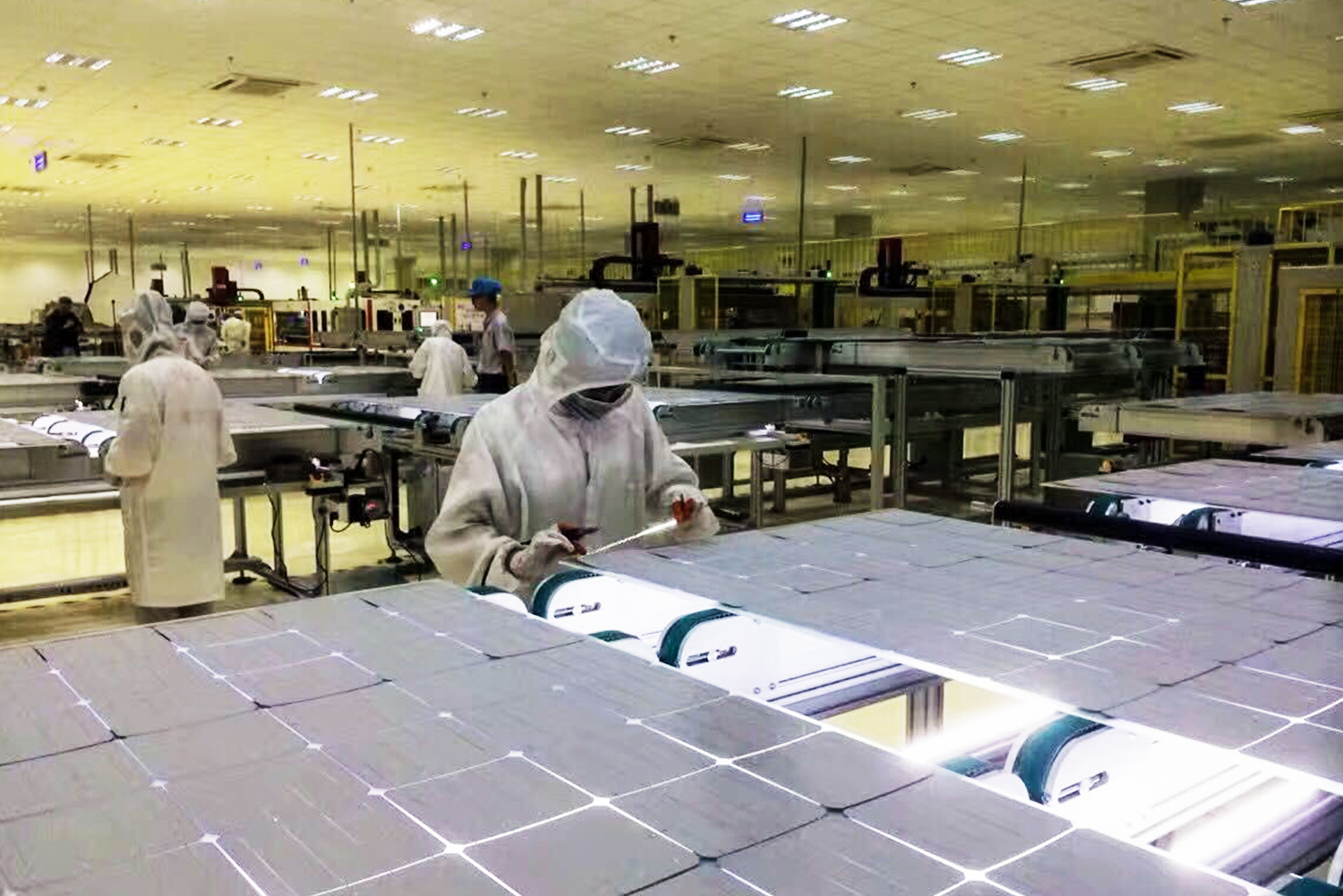
(1) The battery test of the solar panel battery system
Due to the randomness of the cell production conditions, the performance of the batteries produced is not the same, Therefore, in order to effectively combine batteries with the same or similar performance, they should be classified according to their performance parameters. The battery test is to classify the battery by testing the output parameters (current and voltage) of the battery.
Different types of solar energy storage systems have the different batteries. The test is to improve the utilization rate of the battery and make battery components of qualified quality.
(2) Front welding of solar panel battery system
In the solar panel battery system, the busbar is welded to the main grid line on the front of the battery. The busbar is a tin-plated copper tape. The welding machine we use can spot weld the ribbon on the busbar in the form of multiple points. The heat source for welding is an infrared lamp. The length of the ribbon is about twice the length of the battery side. The extra solder ribbon is connected to the back electrode of the back cell when the back side is welded.
(3) Tandem connection of the solar panel battery system back
Back welding is to connect the batteries in series to form a component string. The process used is manual. The positioning of the battery is mainly based on a mold plate with a groove for placing the battery. The size of the slot corresponds to the size of the battery. The position of the solar panel has been designed. Different specifications of solar panel battery systems use different templates. The operator uses an electric soldering iron and solder wire to weld the front electrode of the “front battery” to the back electrode of the “back battery”, and then connect them in series. Weld the leads on the positive and negative poles of the module string together.
(4) Laminating the solar panel battery system
After the back is connected in series and passed the inspection, the module string, glass, cut EVA, glass fiber, and backplane are laid in a certain level and ready to be laminated. The glass is coated with a layer of reagent in advance to increase the bonding strength between the glass and EVA. When laying, ensure the relative position of the battery string and glass and other materials, adjust the distance between the batteries, and lay a good foundation for lamination.
(5) Lamination of the solar panel battery system
Put the laid battery into the laminator, draw out the air in the module by vacuuming, and then heat to melt the EVA to bond the battery, glass and backplane together; finally cool and take out the solar panel battery system. The lamination process is a key step in component production, and the lamination temperature and lamination time are determined by the properties of EVA. When we use fast curing EVA, the lamination cycle time is about 25 minutes. The curing temperature is 150°C.